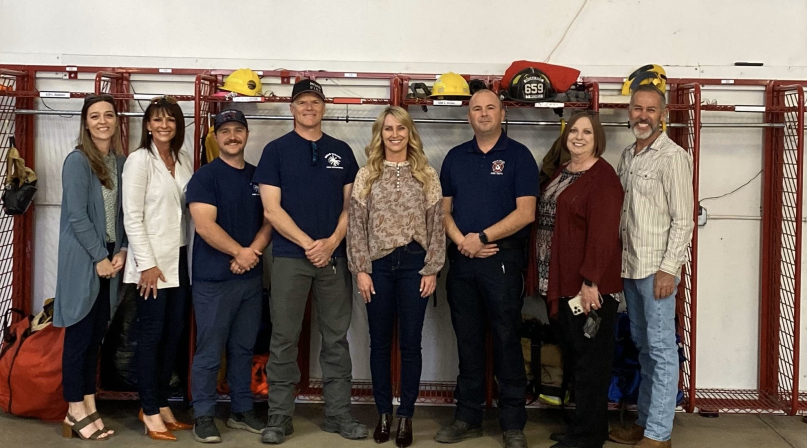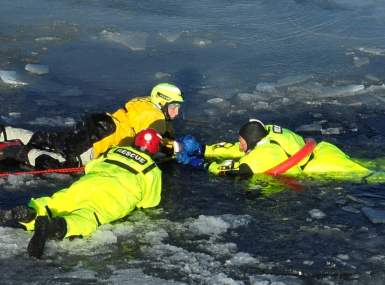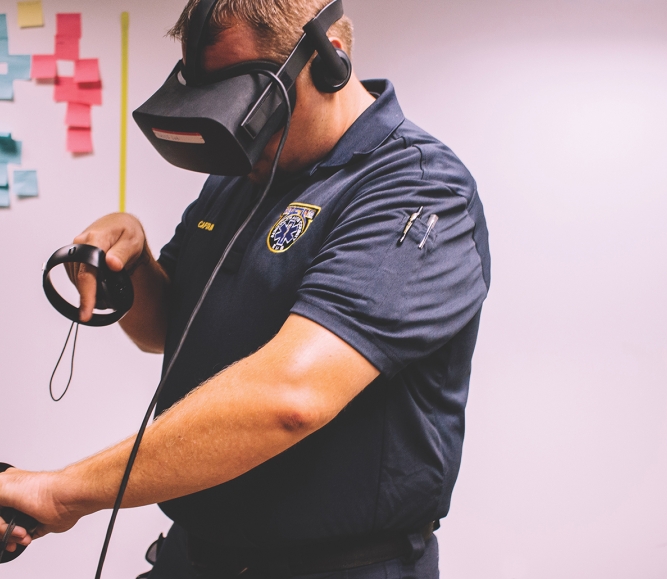Utah Association of Counties takes on health benefits for EMTs

Brandy Grace always knew dinner time with her mom was fleeting.
She was a volunteer emergency medical technician, and that meant living in a state of readiness.
“I grew up knowing that if my mom’s pager went off, she was going to jump in the vehicle and take off,” Grace said.
“Witnessing firsthand what it’s like to have a mother as an EMT, the time commitment it requires and the emotional toll it takes, I’ve always had an appreciation for people who serve in that capacity.”
Her curiosity offered her an insight that would fit into a larger pattern that she recognized as an adult.
“I remember always asking, when she got home, if she was helping someone in Scipio,” the Millard County, Utah town where her family lived, “but nine times out of 10, it would be someone on the freeway.”
Now, as the CEO of the Utah Association of Counties, she sees a lot of her member counties struggling to recruit and retain volunteer EMTs, and she’s taken it on herself to give them some help.
While Utah benefits from numerous national parks, national monuments and other attractions, they are usually located in more rural counties, with populations and tax bases that aren’t suited to support millions of visitors who get injured or lost every year. The residents who live there are also living in different patterns and trying different things than the visitors.
“We do like tourism, we like the benefits to local economies and small businesses in these areas, but we also want to make sure that they have a really positive experience which means that we need to be able to manage the impacts from the additional people visiting,” Grace said.
Working with former Piute County Commissioner Darin Bushman, a former EMT himself, Grace probed counties for what would help draw in volunteers, and health insurance was the answer.
Bushman is now division director for the state Bureau of Emergency Medical Services and was named 2023 Advocate of the Year by the Rural EMS Directors Association.
“When you think about it, a lot of these people are farmers or ranchers or they work for a small construction company and maybe they have a spouse who works somewhere where they’re offered health insurance, but a lot of them just don’t have access to health insurance,” Grace said.
“They’re providing healthcare — they should get it themselves.”
After a few years of lobbying, the Legislature passed a bill allocating $14 million for 23 of the state’s counties and small municipalities to offer a high deductible health insurance plan to certified EMTs who respond to 20% of calls. So far, 120 EMTs are on the program, which the Utah Association of Counties administers.
Ben Armstrong, EMS director at Kane County Hospital, acknowledged that his department uses fewer volunteers than other Utah counties, but one Kane County EMT who had stepped away from volunteer work got more involved again after the program was established and was making use of it to gain coverage for his family.
“It’s worked out well for him,” he said. “We just recently started a basic EMT program and have about twice as many students that we anticipated, and my intent is to make sure that they are aware of this program as we kind of get closer towards the end of this course in the hopes that some of them may opt to work with our volunteer program.”
That kind of staffing is crucial to providing service that will keep visitors traveling to their counties.
“I think that most people assume that when you call 911, that help is coming,” Grace said. “We have tourists from outside our communities, outside the state, outside the country even, who don’t even realize the challenges that we have with getting volunteer EMTs, and so they just assumed that help would be there if they needed it, and the reality is that we’re really struggling to provide that service.
“I think our citizens are aware of what is available to them, but tourists, not so much.”
Related News

County officials moonlight in search and rescue roles
For some county officials, participating in search and rescue operations is another way to serve their communities, and make it safer for people to enjoy natural recreation resources.

SUPPORT Reauthorization Act of 2025: What it means for counties
On December 1, the bipartisan SUPPORT for Patients and Communities (SUPPORT) Reauthorization Act of 2025 (H.R. 2483) was signed into law. The reauthorization renews vital federal funding for programs that seek to prevent opioid overdoses and expand treatment and recovery options.

DHS releases FY 2026 funding opportunities for World Cup and Counter-UAS grants
The U.S. Department of Homeland Security (DHS) and the Federal Emergency Management Agency (FEMA) have released the FY 2026 Notices of Funding Opportunity (NOFOs) for two major new homeland security grant programs: the FIFA World Cup Grant Program and the Counter-Unmanned Aircraft Systems (C-UAS) Grant Program.
County News
Virtual reality enhances training for county EMTs

